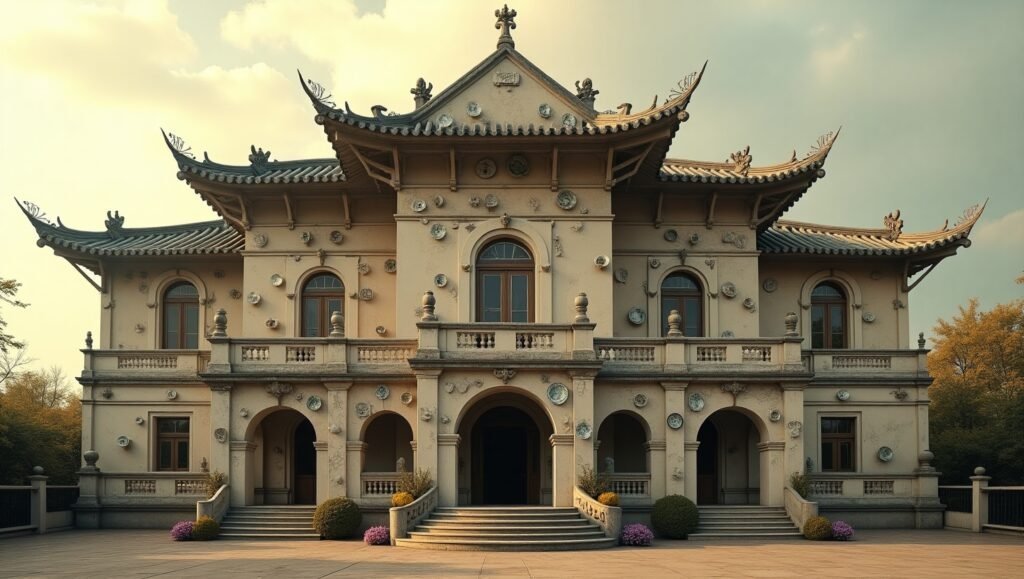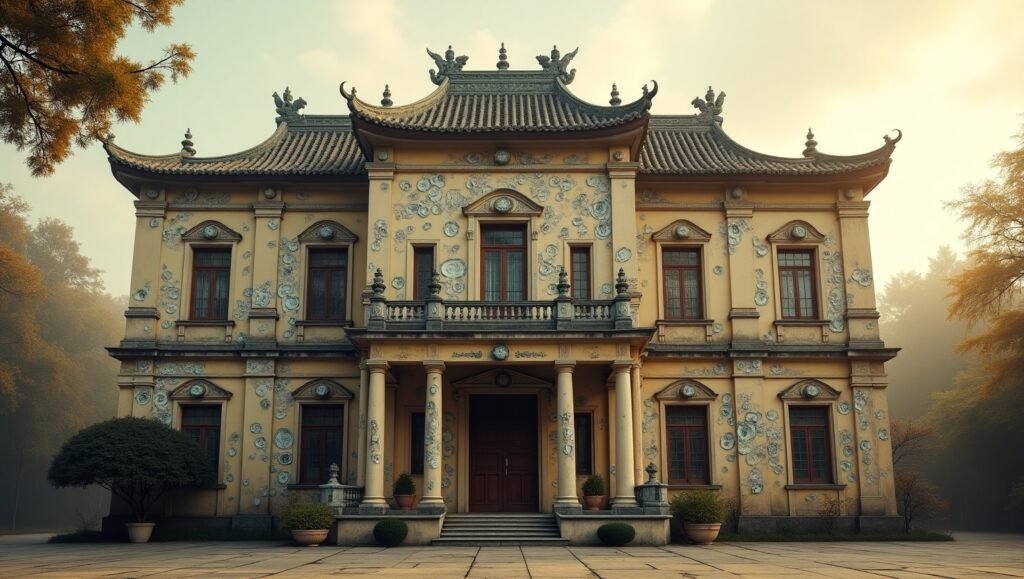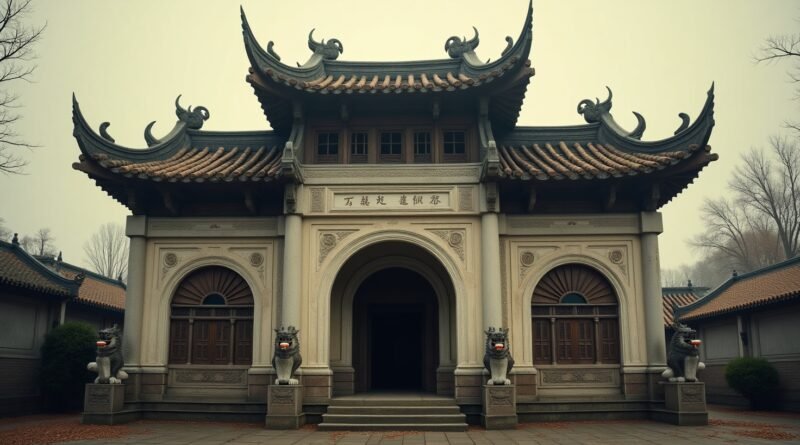China House: 7 Shocking Truths That Will Blow Your Mind
What Is the China House?
The China House is more than just a structure — it’s a visual storybook of Chinese culture, creativity, and secrets hidden in plain sight. Located in Tianjin, China, the house is decorated with over 700 million ancient porcelain fragments, glass pieces, crystal, and marble. Tourists are mesmerized by its sparkling exterior and deeply symbolic design.
It’s often called the “Porcelain House”, but to locals and visitors alike, China House is the name that sticks — and shocks.

A Brief History of the China House
The China House was originally a French-style colonial building from the early 20th century. In 2002, wealthy businessman and art collector Zhang Lianzhi bought the property and transformed it into what we now know as the China House.
It took nearly five years and millions of broken antiques to create this porcelain wonderland. Zhang’s vision was to blend Chinese history, modern art, and cultural symbolism in a way no one had ever done before.
Why Is It Called the “China House”?
The term “China” plays on two meanings:
- China as in the country
- China as in porcelain (often called “fine china”)
Every inch of the house is covered with antique porcelain — teacups, plates, bowls, vases — collected from across China. This makes it a literal “China House.”
What truly surprises most visitors is that many of these artifacts date back to the Ming and Qing Dynasties, turning the house into more than just an architectural wonder — it acts as a vibrant testament to centuries of Chinese tradition and artistry.
Shocking Facts You Didn’t Know
Here’s where things get interesting:
- Over 700 million porcelain pieces are embedded in the structure — some from broken artifacts, others intentionally smashed.
- Critics accused Zhang of destroying valuable history, while supporters say he saved it from being forgotten.
- The house features porcelain dragons, lions, phoenixes, and symbolic carvings representing power, peace, and spirituality.
- The China House once hosted secret diplomatic meetings, adding to its mystery.
- Locals believe the house brings good luck, and many tourists come to pray or meditate inside.
- In the center stands a colossal porcelain Buddha, fiercely protected by two regal lion sentinels.
- Every year, thousands of photographers and influencers flock here, making it a top trending location on TikTok and Instagram.
China House in Modern Media
Online platforms have played a pivotal role in bringing widespread attention to the house. Trending hashtags like #ChinaHouseTianjin, #PorcelainPalace, and #SecretChinaHouse frequently appear on TikTok, Instagram, and YouTube.
Influencers call it the “Palace of Shattered Beauty,” and tourists often post before-and-after videos of their shocked expressions after seeing the intricate mosaics up close.
Even travel giants like National Geographic and Lonely Planet have covered the China House in their cultural features.
🔗 External Link (Dofollow): Read more about China House on China Highlights

Cultural Importance and Symbolism
The house is more than a tourist destination — it’s a cultural icon. Here’s why:
- Dragons: Represent imperial power
- Lotus Flowers: Symbolize purity and rebirth
- Koi Fish: Represent strength and perseverance
- China’s Porcelain Past: Fragile in form, powerful in legacy
Inside, the walls tell stories — historical timelines, dynastic changes, and philosophical quotes are embedded in mosaic form.
Planning a Visit to the China House
📍 Location:
No. 72, Chifeng Road, Heping District, Tianjin, China
🕒 Opening Hours:
Daily: 9 AM – 5 PM
💴 Ticket Price:
Approximately ¥50 (~$7 USD)
✅ Tips Before You Go:
- Go early to avoid crowds
- Photography is allowed — bring a wide-angle lens
- A guided tour offers deep insights into the hidden stories and symbolism
- The area is near other historical spots in Tianjin — make a day of it
Controversy Surrounding the China House
While the China House is admired by millions, it’s not without its critics. Critics and admirers alike are divided over Zhang Lianzhi’s use of historical porcelain in his decorative mosaics.
Some believe these items should have been preserved in museums instead of being cemented into walls. Historians argue that many porcelain pieces were culturally significant artifacts, potentially lost to posterity.
However, Zhang defends his artistic vision, insisting that most of the fragments were already damaged, and he simply gave them “a new life.”
Despite the controversy, the China House has been officially recognized as a private museum and remains legally protected under Chinese heritage laws.
What Do Locals Think About the China House?
For Tianjin locals, the China House has become a source of pride. While some remain skeptical, many residents see it as a unique fusion of art and history.
During Chinese New Year and national holidays, the house becomes a gathering point for celebrations, prayers, and traditional performances.
Locals believe the porcelain dragons and guardian lions attract positive energy and ward off misfortune, making the place spiritually significant.
Some elderly locals even say the site has long been a “powerful land point,” where ancient Feng Shui lines converge — adding both mystical and aesthetic importance.
What’s Next for the China House?
In recent years, there has been talk of expanding the China House into a larger cultural complex, with:
- A tea museum
- A porcelain workshop for tourists
- Virtual tours for international viewers
- An art residency program for local ceramic artists
If these plans succeed, the China House could become more than a national landmark — it could evolve into a global hub for ceramic art and cultural diplomacy.
With international tourism rising again post-pandemic, now might be the perfect time to see the China House before the next wave of attention arrives.
Final Thoughts
The China House stands at the crossroads of beauty, controversy, and national pride. It’s a place where history and imagination collide — where every broken piece has a purpose. So, why is everyone talking about the China House? Because it’s not just a building — it’s a bold statement made with millions of fragile voices from the past.
You May Also Like:
🔹 Why the Blue Dress Never Goes Out of Style
Explore the history, symbolism, and fashion legacy behind the timeless blue dress that continues to inspire designers across generations.
🔹 The History and Evolution of r/Politics
Dive into the fascinating journey of Reddit’s political hub — from a niche discussion board to a global platform influencing opinions and elections.

